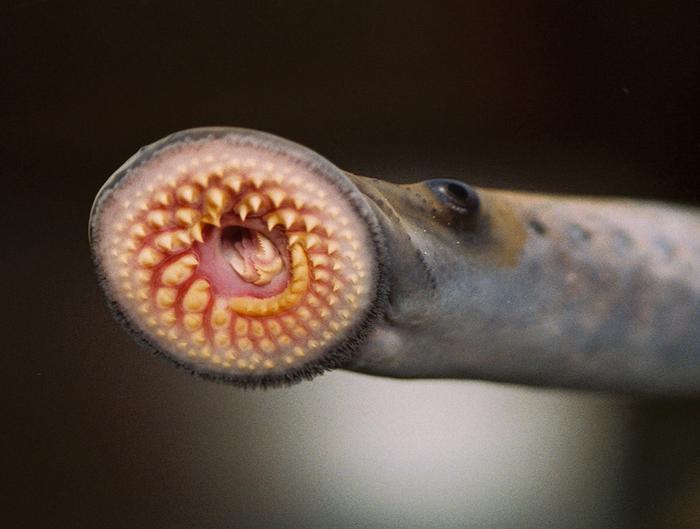Unexpected Insights from an Invasive Species
Sea lampreys, often viewed as destructive invaders in Midwestern fisheries, are providing crucial clues about the evolutionary origins of vertebrates. A new study from Northwestern University has uncovered striking similarities between these jawless fish and their jawed counterparts, shedding light on the development of key stem cells that drove vertebrate evolution.
The research, published in Nature Ecology & Evolution, compared the genetic makeup of lampreys to that of Xenopus, a jawed aquatic frog. The findings reveal a shared genetic network governing pluripotent stem cells in both species, despite their divergence over 500 million years ago.
Unraveling the Genetic Puzzle of Stem Cells
The study focused on two types of pluripotent stem cells: blastula cells (embryonic stem cells) and neural crest cells. These cells are crucial in early development, capable of becoming any cell type in the body. By analyzing gene expression patterns, the researchers discovered a remarkably similar pluripotency gene network in both jawless and jawed vertebrates.
However, a key difference emerged. While both species express the pou5 gene in blastula cells, lampreys lack this expression in neural crest stem cells. This absence may explain why lampreys don’t develop jaws and other skeletal features found in jawed vertebrates.
Carole LaBonne, the study’s lead researcher, explains the significance: “Lampreys may hold the key to understanding where we came from. In evolutionary biology, if you want to understand where a feature came from, you can’t look forward to more complex vertebrates that have been evolving independently for 500 million years. You need to look backwards to whatever the most primitive version of the type of animal you’re studying is, which leads us back to hagfish and lampreys — the last living examples of jawless vertebrates.”
The research team’s findings suggest that the pluripotency networks in blastula and neural crest stem cells co-evolved at the base of the vertebrate lineage. This implies a common ancestral origin for these crucial developmental mechanisms.
Joshua York, the study’s first author, noted, “While most of the genes controlling pluripotency are expressed in the lamprey neural crest, the expression of one of these key genes — pou5 — was lost from these cells. Amazingly, even though pou5 isn’t expressed in a lamprey’s neural crest, it could promote neural crest formation when we expressed it in frogs, suggesting this gene is part of an ancient pluripotency network that was present in our earliest vertebrate ancestors.”
Why it matters: Understanding the evolutionary origins of vertebrate features is crucial for comprehending human biology and development. This research not only illuminates the ancient roots of our own developmental processes but also provides insights into how genetic changes can lead to major evolutionary innovations, such as the development of jaws.
The study’s findings raise intriguing questions about the constraints on gene expression levels in pluripotent stem cells. Despite 500 million years of separate evolution, both lampreys and jawed vertebrates maintain similar expression levels for key pluripotency genes. This unexpected conservation suggests there may be fundamental biological principles at work that we don’t yet fully understand.
For the broader scientific community, this research opens new avenues for exploring the origins of vertebrate diversity. It may lead to insights into developmental disorders and could potentially inform regenerative medicine strategies.
Looking ahead, researchers will likely focus on understanding why the pou5 gene was lost in lamprey neural crest cells and how this loss influenced their evolutionary trajectory. Additionally, further studies may explore how manipulating these ancient gene networks could impact development in modern vertebrates, potentially leading to new therapeutic approaches for various developmental disorders.
As we continue to unravel the genetic mysteries of our earliest vertebrate ancestors, lampreys may prove to be an invaluable model for understanding the fundamental principles of vertebrate evolution and development.
If our reporting has informed or inspired you, please consider making a donation. Every contribution, no matter the size, empowers us to continue delivering accurate, engaging, and trustworthy science and medical news. Independent journalism requires time, effort, and resources—your support ensures we can keep uncovering the stories that matter most to you.
Join us in making knowledge accessible and impactful. Thank you for standing with us!

